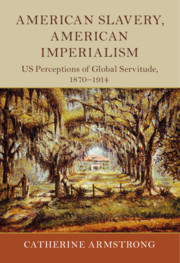Book contents
- American Slavery, American Imperialism
- Slaveries since Emancipation
- American Slavery, American Imperialism
- Copyright page
- Contents
- Figures
- Acknowledgements
- Introduction
- 1 A Rhetorical Continuum? How Representations of Antebellum Slavery Endure in Post-War Culture
- 2 Global Contexts: How External Factors Drive US Perceptions of Slavery
- 3 Othering the Slave Owner
- 4 Othering the Enslaved
- 5 Gender and the Rhetoric of Slavery
- 6 Resistance and the Slavery Counter-Narrative
- Conclusion
- Bibliography
- Index
5 - Gender and the Rhetoric of Slavery
Published online by Cambridge University Press: 17 August 2020
- American Slavery, American Imperialism
- Slaveries since Emancipation
- American Slavery, American Imperialism
- Copyright page
- Contents
- Figures
- Acknowledgements
- Introduction
- 1 A Rhetorical Continuum? How Representations of Antebellum Slavery Endure in Post-War Culture
- 2 Global Contexts: How External Factors Drive US Perceptions of Slavery
- 3 Othering the Slave Owner
- 4 Othering the Enslaved
- 5 Gender and the Rhetoric of Slavery
- 6 Resistance and the Slavery Counter-Narrative
- Conclusion
- Bibliography
- Index
Summary
This chapter highlights the crucial function of gender at its intersection with race in discourse about slavery and abolition. It takes two case studies of ‘white slavery’, which received substantial press coverage: the enslavement of Circassian women as concubines in the Ottoman Empire and ‘the white slavery panic’ about sex trafficking in the US.
- Type
- Chapter
- Information
- American Slavery, American ImperialismUS Perceptions of Global Servitude, 1870–1914, pp. 185 - 224Publisher: Cambridge University PressPrint publication year: 2020

